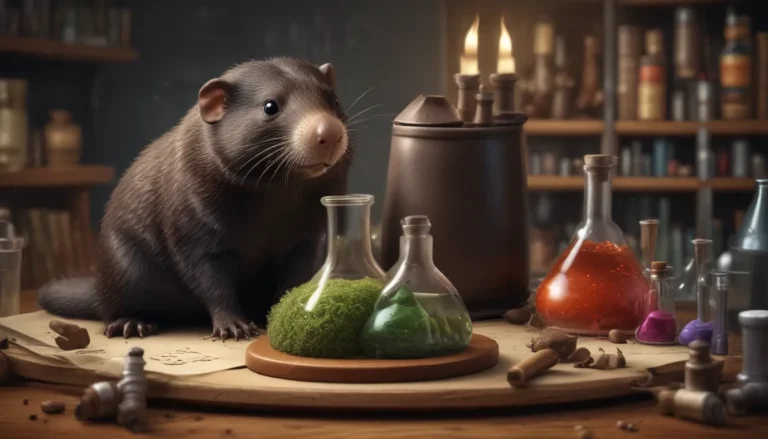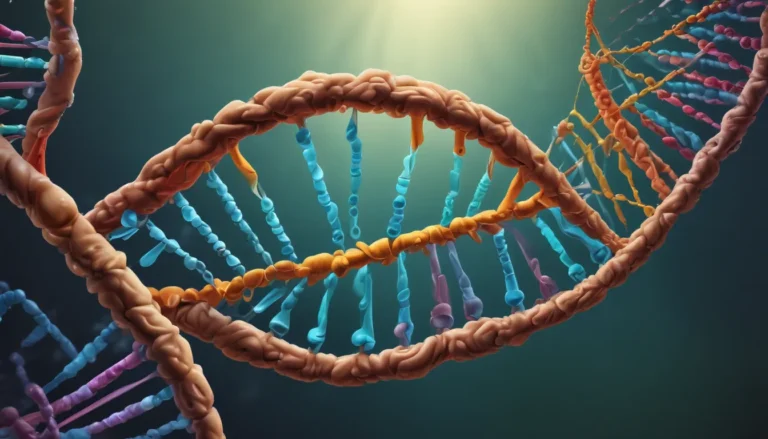A Note About Images: The images used in our articles are for illustration purposes only and may not exactly match the content. They are meant to engage readers, but the text should be relied upon for accurate information.
Chemical equilibrium is a captivating concept that provides a window into the intricate world of chemical reactions. It serves as the foundation for understanding the dynamic behavior of various systems, ranging from industrial processes to biological functions. In this enlightening exploration, we will unravel ten intriguing facts about chemical equilibrium that will deepen your appreciation for this essential principle.
Embracing the Balancing Act: Chemical Equilibrium Defined
Chemical equilibrium is a delicate balance where the rates of the forward and reverse reactions in a system are equal, leading to a state of equilibrium. This equilibrium resembles a seesaw, where the reactants and products maintain a harmonious balance. It is a dynamic dance party where molecules continuously switch partners between reactants and products, creating a balanced and ever-changing process vital for numerous chemical reactions in nature and our daily lives.
The Dynamic Interplay of Chemical Equilibrium
Contrary to common misconceptions, chemical equilibrium is not a static state but rather a dynamic process. Molecules are constantly interconverting between reactants and products, sustaining a continuous formation and decomposition of compounds at a balanced rate. This dynamic nature adds a layer of complexity and intrigue to the equilibrium process, showcasing its perpetual evolution.
Unveiling the Power of Le Chatelier’s Principle
Le Chatelier’s Principle stands as a foundational concept in the realm of chemical equilibrium. It posits that when a system at equilibrium experiences a change in temperature, pressure, or concentration, it will shift to counteract that change. This principle elucidates how external influences can manipulate the equilibrium position, offering insights into predicting and controlling chemical reactions.
Harnessing Catalysts: Catalysts and Equilibrium
Catalysts play a pivotal role in accelerating chemical reactions towards equilibrium. These substances enhance the rates of both forward and reverse reactions without affecting the equilibrium position. Catalysts act as facilitators for achieving equilibrium faster, showcasing their indispensable role in streamlining chemical processes.
Deciphering Equilibrium Constant: Quantifying Equilibrium Position
The equilibrium constant (K) serves as a numerical indicator of the equilibrium position in a chemical system. By expressing the concentrations of products and reactants at equilibrium, the equilibrium constant offers valuable insights into the relative quantities of substances involved in the reaction. This quantitative value serves as a cornerstone for understanding the equilibrium dynamics.
Navigating Equilibrium Shifts: Influences of Changing Conditions
Various factors such as temperature, pressure, and concentration can instigate shifts in the equilibrium position. Understanding these influences is crucial for predicting and manipulating chemical reactions in diverse settings, ranging from industrial applications to environmental studies. Mastery over equilibrium shifts empowers scientists to steer reactions towards desired outcomes.
Harmony in Diversity: Physical and Chemical Equilibrium
Chemical equilibrium transcends traditional reactions and extends its reach into physical processes like evaporation or dissolution. These physical equilibria delineate the balance between molecules across different phases and highlight the intricate dance between substances to achieve equilibrium. Understanding this diverse interplay enriches our comprehension of equilibrium phenomena.
Symphony of Equilibrium in Biological Systems
The enigmatic dance of chemical equilibrium finds resonance in biological systems, underscoring its vital role in biochemical processes. Enzyme-catalyzed reactions, cellular respiration, and myriad biological functions rely on the delicate equilibrium balance to orchestrate essential processes. Chemical equilibrium serves as the invisible conductor orchestrating the symphony of life at a molecular level.
Embracing Reversibility: Reversible Reactions and Equilibrium
Reversible reactions hold a symbiotic relationship with chemical equilibrium, as they can proceed in both forward and reverse directions based on the prevailing conditions. When a reversible reaction reaches equilibrium, the concentrations of reactants and products stabilize, heralding a state of equilibrium characterized by constancy and stability.
Elegance in Equilibrium: Solubility Dynamics
The equilibrium of solubility processes unveils a fascinating interplay between dissolution and crystallization dynamics. The solubility of a substance in a solvent hinges on multiple factors like temperature and pressure. At equilibrium, the rate of dissolution balances the rate of crystallization, culminating in a saturated solution epitomizing equilibrium harmony.
Chemical equilibrium embodies a mesmerizing realm that governs the intricate tapestry of chemical reactions across various domains. Its principles unravel the mysterious dance of molecules, offering profound insights into fundamental processes that shape our world. Delve deeper into the captivating world of chemical equilibrium to unravel its secrets and witness the exquisite balance that underpins the chemistry of life.
FAQs
-
What is chemical equilibrium?
Chemical equilibrium is a state where the rates of the forward and backward reactions are equal, maintaining a constant concentration of reactants and products. -
How do factors influence chemical equilibrium?
Factors such as temperature, pressure, and concentration can impact chemical equilibrium by shifting the balance between reactants and products. -
What does Le Chatelier’s principle entail?
Le Chatelier’s principle dictates that a system at equilibrium will respond to external changes by shifting to counteract the imposed alterations. -
Why is chemical equilibrium crucial in industrial processes?
Chemical equilibrium plays a pivotal role in industrial processes, facilitating the efficient production of desired products through a nuanced understanding of equilibrium dynamics. -
In what ways does chemical equilibrium intersect with environmental studies?
Chemical equilibrium informs environmental studies by elucidating the equilibrium dynamics of pollutants in air, water, and soil, guiding assessments of contaminant fate and transport. -
How does chemical equilibrium influence biochemistry?
Chemical equilibrium governs essential biological processes in biochemistry, shaping enzyme-catalyzed reactions and ligand-protein interactions critical for biological functions.
Embark on a journey of discovery into the realm of chemical equilibrium to unravel its mysteries and appreciate the intricate balance that underpins the chemistry of our world. Explore the dynamic interplay of molecules, the transformative power of catalysts, and the nuanced equilibrium shifts that shape our chemical universe. Join us in celebrating the wondrous dance of equilibrium and delve into the vibrant tapestry of chemical reactions that define our reality.






